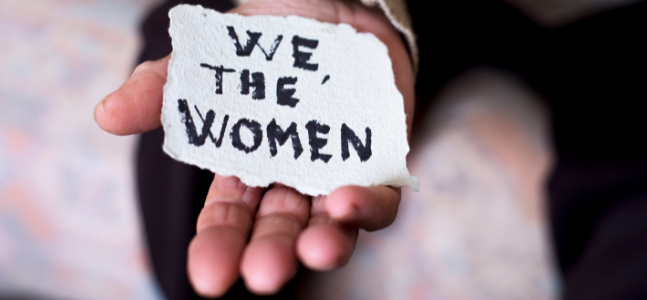NAU’s Department of Women’s and Gender Studies has crowd-sourced a list of outstanding historical and contemporary figures who advocated for women’s rights/human rights across all conceivable fields of intellectual, political, medical, and artistic endeavors from different geographical locations. As a caveat, as you read and marvel at these “women-worthies” listed below, please keep in mind that given the temporal and spatial expanse of human history, these individuals far from exhaust the rich archives of women’s/gender histories, personalities and their achievements. Also, as we memorialize outstanding individuals’ achievements, it behooves us to also recognize the communities and collectivities within which they lived and worked. Names of our contributors appear within parenthesis at the end of each profile.
We have curated this list with careful attention to politics of inclusive and diverse representation. We are embedding some links for the individuals on our list—this is an invitation for you to read and research further, especially as you are intrigued by these outstanding figures and their contributions in enriching our collective lives.
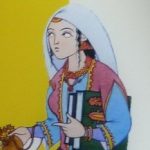
Amrita Sher-Gil and Frida Kahlo: Painters train our “ways of seeing,” opening up the world for new and competing interpretations. Through their work, they direct the human gaze to admire color and movement, turning the mundane into wonder and art. Two women painters, Amrita and Frida, were contemporaries in the 20th century, leaving behind a plethora of canvases and inviting viewers from across the world to learn from and marvel at their talent.
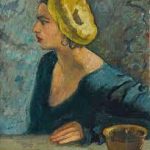
Unfortunately, fame and artistic recognition came to Amrita after her death, and sadly even today her work is not well known beyond the subcontinent. Some have also referred to Amrita as India’s Frida Kahlo.
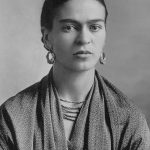
(Sanjam Ahluwalia, WSG and Department of History)
Ismat Chugtai and Gabriela Mistral: Writers and poets have written for multi-generational readers; together they have cautioned us against dystopian futures, while simultaneously training our sights onto redemptive utopias. What a world of richness they have bequeathed to us—one that only gets richer as each generation of readers encounters them and their written words.
Ismat Chughtai’s “Lihaaf/Quilt” (1942) is one of Chughtai’s earliest known Indian short stories focused on women’s sexuality and lesbian sex/love. Lihaaf’s exploration of homoeroticism was deemed vulgar and corrupting of societal values, which led to its ban in 1942. As a Muslim feminist writer, Chughtai defied stereotypes, fighting a legal battle against the ban on her story under British colonial obscenity laws. Defending the freedom of speech, Chughtai was successful in getting the ban legally overturned, and today this story, along with her other works of fiction and non-fiction, mark her as one of the most outstanding South Asian women writers of the 20th century.
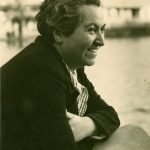
(Sanjam Ahluwalia, WGS and Department of History)
Esperanza Sánchez Mastrapa (1901-1958) was a pharmacist from eastern Cuba. She was active in local Black civic associations (like the Federation of Societies of Color of Oriente Province) and in the national Communist Party. Notably, she also served as the only Black woman elected as a delegate to the 1940 Constitutional Assembly. According to historian Takkara Brunson’s book that discusses Sánchez and others, “Radical Black women like Sánchez employed communism as a strategy for democratic reform between 1940 and the 1959 Revolution”. (Elizabeth Schwall, Department of History)

Enid Mary Blyton was a prolific British children’s author born in August of 1897. Before her death in 1968, Blyton published no fewer than 700 books. Her works have been translated into 90 different languages in order to better reach a diverse audience of children who enjoy her stories as much as those of earlier generations. For many children, it is difficult to see themselves in any of the Enid Blyton books they read, as all the characters she wrote about were white, English-speaking British schoolchildren. However, series like “Malory Towers” and “St. Claire’s” provided younger readers with a strong female role model—women and girls who prided themselves on their intelligence and strength, and who supported and uplifted one another. (Aeka Vinod Joshi, Flagstaff Arts and Leadership Academy, Grade 10)
Marsha P Johnson and Sylvia Rivera: Johnson was a black trans woman who (along with Sylvia Rivera, Latinx trans woman) is known for instigating the Stonewall Riots in June 1969. The Stonewall Riots were protests against police violence. She and other queer people in the community, including Rivera, fought back against the terrorizing brutality that the police enacted against working-class queer and trans POC. Together they co-founded STAR, an organization that worked to find shelter, food security and community for queer homeless youth. Johnson and Rivera both struggled with mental illnesses, worked as sex workers, were at various times unsheltered themselves and spoke out about the necessity for the liberation and freedom of those most oppressed by the violent systems of racism, capitalism, ableism, misogyny, and trans bigotry. Rivera also spoke openly of her struggle with addiction and of surviving childhood sexual assault. They are both examples of powerful, unapologetic women of color who have inspired countless activists and community action in the decades that followed, including the speech by Raquel Willis who, at the Brooklyn Liberation March in June 2020, honors Marsha P’s legacy. (Ari Burford, WGS)

